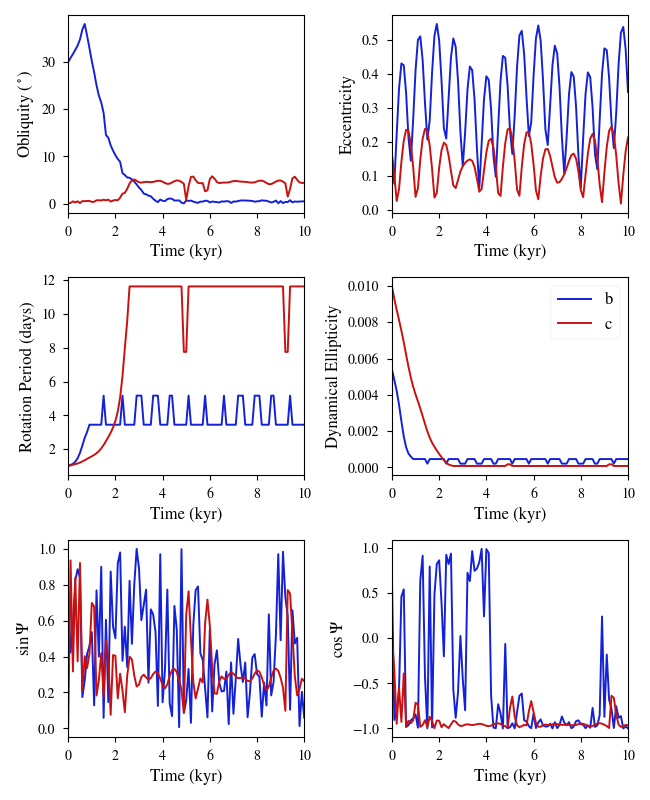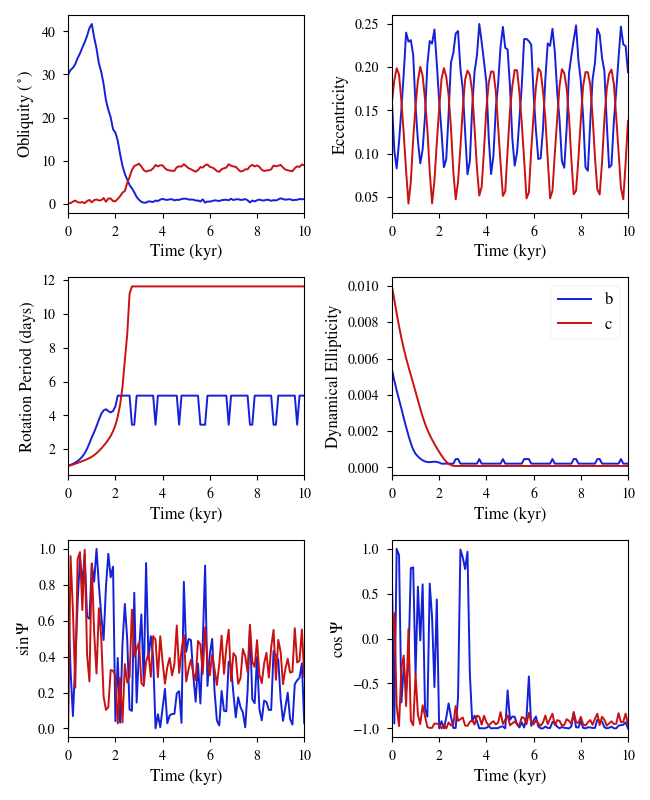Multiple Cassini States in One System
Overview
Demonstration of two planets’ (Teegarden’s Star b and c) obliquity evolution under the influence of tides and gravitational perturbations from each other Both planets damp into a “Cassini state.”
Date |
02/24/2020 |
Author |
Rory Barnes |
Modules |
EqTide DistOrb DistRot STELLAR |
Approx. runtime |
2 minutes |
A damped orbital-rotational system can enter a “Cassini state,” in which a planet’s rotational axis, orbital axis, and the local total angular momentum vector are all coplanar. In this case, we consider Teegarden’s Star’s planetary system, which consists of two planets that are both affected by tides from the host star. Here we assume a mutual inclination of ~10 degrees, and all orbital and physical parameters are consistent with the observations. We assume that planet b has no water, but planet c does; this choice means that planet b’s damping is 10x weaker than c’s. Both planet’s damp into a Cassini state.
To run this example
python makeplot.py <pdf | png>
Expected output

Evolution of Teegarden’s Star b and c into Cassini states, assuming the 2nd order secular orbital model and the constant-time-lag tidal model. Planet b equilibrates to an obliquity of about 1 degree, while planet c, which is potentially habitable, damps to about 9 degrees. Note that planet b’s eccentricity occassionally reaches values larger than 0.23, where the CPL tidal model predicts its rotation rate will switch to the 3:2 spin-orbit resonance. The dynamical ellipticity, i.e. oblateness, is calculated by assuming hydrostatic equilibrium, including the centripetal force. For both planets, the second Cassini parameter (bottom right) settles to a value of approximately -1, indicating the presence of a Cassini state.

Same as previous figure, but with the 4th order secular model.